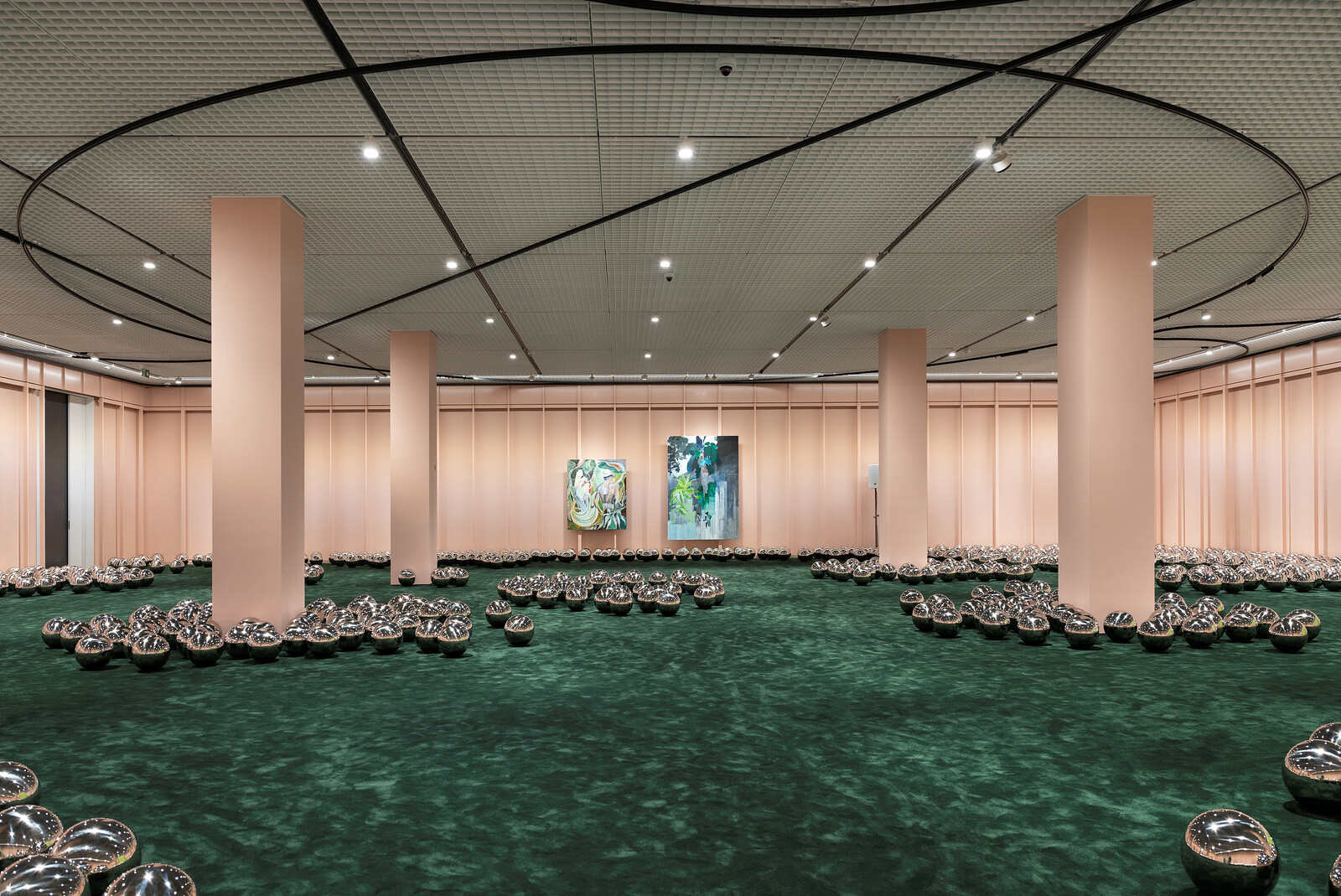September 6, 2024
Brynjulf Bulls plass 3
0250 Oslo
Norway
Norway’s National Museum of Art, Architecture and Design is pleased to announce its third presentation of works selected from the Fredriksen Family Collection. The works will be shown in the dedicated gallery space, The Pillars.
The centerpiece of the presentation is a new iteration of Yayoi Kusama’s iconic installation Narcissus Garden (1966–), which will be seen together with paintings by Hurvin Anderson, Michael Armitage, Louise Giovanelli, Yukimasa Ida and Kerry James Marshall.
“We think it’s exciting to be able to present a work by such an established artist as Kusama—a work that, when it was first made, was pioneering but simultaneously playful and visitor-friendly. Narcissus Garden broke all expectations for what a work of art should be, and it allowed the public to become part of the work,” says Ingrid Røynesdal, director of the National Museum.
“Narcissus Garden will be shown alongside paintings by a newer generation of artists. Together, they present the breadth and diversity of the Fredriksen Family Collection—a collection we are happy to be able to show in the National Museum,” adds Røynesdal.
Landscapes and gardens are recurring motifs throughout art history. With one foot in Western art history and the other in the present, the works in this edition of The Pillars expand on such traditional subject matter. Alternative identities populate gardens and landscapes, artistic techniques are fine-tuned, and the stories they tell are adjusted to new realities.
Over seven decades, the Japanese artist Yayoi Kusama has explored themes of infinity and self-reflection. Narcissus Garden refers to the ancient mythological figure of Narcissus, a strikingly handsome youth who fell in love with his reflection in a pool of water and wasted away while staring at his own image. The myth has since served as a tale cautioning against the dangers of vanity and self-absorption, and readings of Kusama’s work have ranged from social commentary on the exclusionary nature of the art world to the narcissistic and transient nature of human connection in the digital age.
While Louise Giovanelli’s meticulous paintings infuse classic techniques with modern sensibilities to create dreamlike imagery and drapery—essential elements of Western art-historical compositions in previous centuries—Yukimasa Ida combines modern abstract expressionism and elements from traditional Japanese techniques such as the gestural brushstrokes of sumie or the layering of nihonga.
The Kenyan-British artist Michael Armitage creates vibrant, large-scale paintings on Lubugo bark cloth, blending East African folklore with socio-political commentary and Western art traditions. In this diverse landscape, Kerry James Marshall’s signature depiction of Black figures in everyday and historical contexts challenges the absence of Black subjects in the Western art canon, and Hurvin Anderson draws from his Jamaican heritage to depict scenes of domestic spaces, barbershops and imagined tropical landscapes.
The Fredriksen Family Collection
The Fredriksen Family Collection is dedicated to the memory of Inger Katharina Astrup Fredriksen (1950–2006). It has constantly evolved since the acquisition of its first works in 2018. Considered together, the art in the collection represents a diversity of expressions, positions and strategies, with particular emphasis on art from the post-war period until today.
The Pillars
The Fredriksen Family Collection forms the basis for the National Museum’s exhibition series in the dedicated gallery space called The Pillars. Designed by 2050+, the flexible exhibition architecture allows for a series of exhibitions to be displayed with different layouts, colors and expressions, yet with a recognizable identity that both contrasts and complements the museum’s presentation of its own collection.
The National Museum
Located in Oslo, Norway, the National Museum of Art, Architecture and Design is the largest art museum in the Nordic countries. The collection, which contains 400,000 objects from antiquity to the present day, includes paintings, sculpture, drawings, textiles, furniture and architectural models. At the National Museum, visitors can experience a comprehensive collection presentation of around 6,500 works, in addition to a varied program of temporary exhibitions and events.


